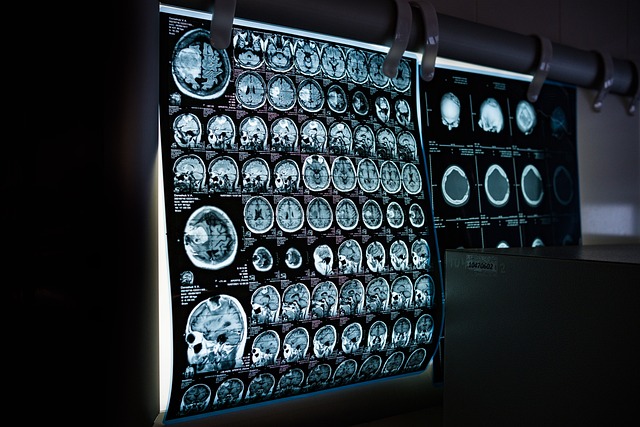Understanding Amyloidosis: Symptoms, Diagnosis, and Treatment Options
Amyloidosis occurs when abnormal proteins form deposits in tissues and organs throughout the body, disrupting normal function. These protein deposits, called amyloids, can affect different organs including the heart, kidneys, liver, nervous system, and digestive tract. While considered rare, amyloidosis can be life-threatening if left untreated, making early detection and appropriate management essential for improving patient outcomes and quality of life.

Amyloidosis represents a complex group of diseases characterized by the abnormal folding and accumulation of proteins in various organs and tissues. These misfolded proteins, known as amyloids, form fibrous deposits that can disrupt normal organ function and lead to progressive damage over time. Understanding the different aspects of this condition is crucial for patients, families, and healthcare providers working together to manage this challenging disease.
What are the primary symptoms of amyloidosis?
The symptoms of amyloidosis vary significantly depending on which organs are affected and the type of amyloid protein involved. Common early symptoms include unexplained fatigue, unintentional weight loss, and swelling in the legs and ankles. Patients may also experience shortness of breath, irregular heartbeat, and digestive issues such as diarrhea or constipation.
When amyloidosis affects the heart, patients often develop symptoms resembling heart failure, including chest pain, difficulty breathing during physical activity, and fluid retention. Kidney involvement may manifest as protein in the urine, leading to foamy urine appearance and progressive kidney dysfunction. Neurological symptoms can include numbness, tingling in hands and feet, and carpal tunnel syndrome.
How amyloidosis is diagnosed
Diagnosing amyloidosis requires a comprehensive approach involving multiple diagnostic tools and tests. The process typically begins with a thorough medical history and physical examination, followed by blood and urine tests to identify abnormal protein levels and organ function markers.
The definitive diagnosis requires a tissue biopsy, where a small sample of affected tissue is examined under a microscope using special staining techniques. Common biopsy sites include abdominal fat, bone marrow, or affected organs such as the kidney or heart. Advanced imaging techniques like echocardiograms, MRI scans, and nuclear medicine studies help assess organ involvement and disease progression.
Genetic testing may be recommended for patients with suspected hereditary amyloidosis, while specialized blood tests can identify specific types of amyloid proteins, helping guide treatment decisions.
What are the main treatment approaches for amyloidosis?
Treatment strategies for amyloidosis focus on slowing or stopping the production of amyloid proteins and managing organ-specific complications. The approach varies significantly based on the type of amyloidosis and the organs involved.
For AL amyloidosis, which involves abnormal antibody light chains, treatment often includes chemotherapy regimens similar to those used for multiple myeloma. These may include melphalan, dexamethasone, and newer targeted therapies like bortezomib or daratumumab. In select cases, high-dose chemotherapy followed by autologous stem cell transplantation may be considered.
Hereditary amyloidosis treatment has been revolutionized by liver transplantation, which can halt the production of mutant proteins, and newer gene-silencing therapies that reduce protein production at the cellular level. AA amyloidosis management focuses on treating the underlying inflammatory condition causing the protein buildup.
What lifestyle changes can help manage amyloidosis symptoms?
Lifestyle modifications play a crucial supportive role in managing amyloidosis symptoms and improving overall quality of life. Dietary changes are particularly important, especially for patients with kidney involvement who may need to limit protein, sodium, and fluid intake based on their healthcare provider’s recommendations.
Regular, gentle exercise can help maintain cardiovascular health and muscle strength, though patients should work with their medical team to develop an appropriate activity plan. Stress management techniques, including meditation, yoga, or counseling, can help patients cope with the emotional challenges of living with a chronic condition.
Patients should also prioritize getting adequate rest, maintaining good hygiene to prevent infections, and staying up-to-date with vaccinations. Regular monitoring of symptoms and maintaining open communication with healthcare providers ensures timely adjustments to treatment plans.
Are there any new or emerging treatments for amyloidosis?
The field of amyloidosis treatment has seen remarkable advances in recent years, with several promising therapies showing significant potential. Gene-silencing technologies, including antisense oligonucleotides and small interfering RNA therapies, have demonstrated the ability to reduce the production of disease-causing proteins in hereditary forms of the disease.
Monoclonal antibodies designed to target and clear existing amyloid deposits are being investigated in clinical trials, offering hope for reversing organ damage. Additionally, small molecule drugs that stabilize proteins and prevent their misfolding are showing promise in early-stage research.
Immunomodulatory approaches and combination therapies are also being explored, with researchers investigating ways to enhance the body’s natural ability to clear amyloid deposits while simultaneously reducing new protein production.
| Treatment Category | Provider/Institution | Cost Estimation |
|---|---|---|
| Chemotherapy Regimens | Major Cancer Centers | $50,000-$150,000 annually |
| Stem Cell Transplant | Specialized Medical Centers | $200,000-$400,000 per procedure |
| Gene Therapy | Research Hospitals | $300,000-$500,000 per treatment |
| Supportive Care | Local Healthcare Providers | $10,000-$30,000 annually |
Prices, rates, or cost estimates mentioned in this article are based on the latest available information but may change over time. Independent research is advised before making financial decisions.
Amyloidosis remains a challenging condition requiring specialized medical care and a multidisciplinary approach to treatment. While the disease can be serious and life-altering, advances in diagnostic techniques and therapeutic options continue to improve outcomes for patients. Early detection, appropriate treatment selection, and comprehensive supportive care are essential components of successful disease management. Patients and families should work closely with experienced healthcare teams to develop personalized treatment plans that address both the medical and quality-of-life aspects of living with amyloidosis.
This article is for informational purposes only and should not be considered medical advice. Please consult a qualified healthcare professional for personalized guidance and treatment.




